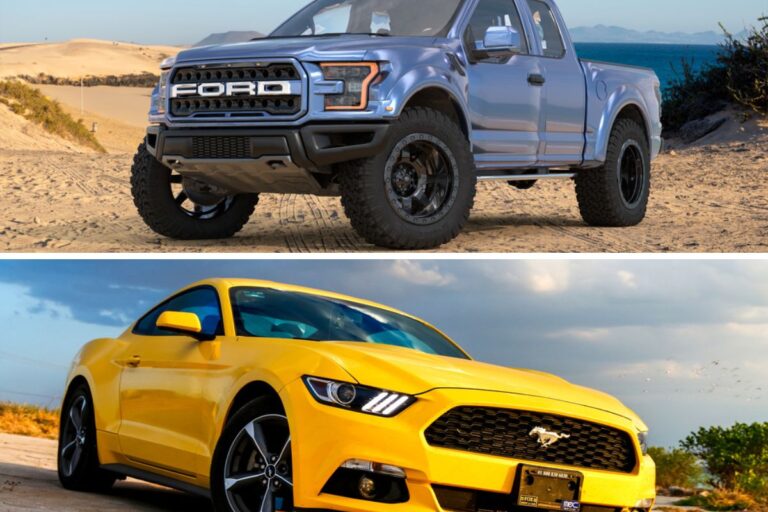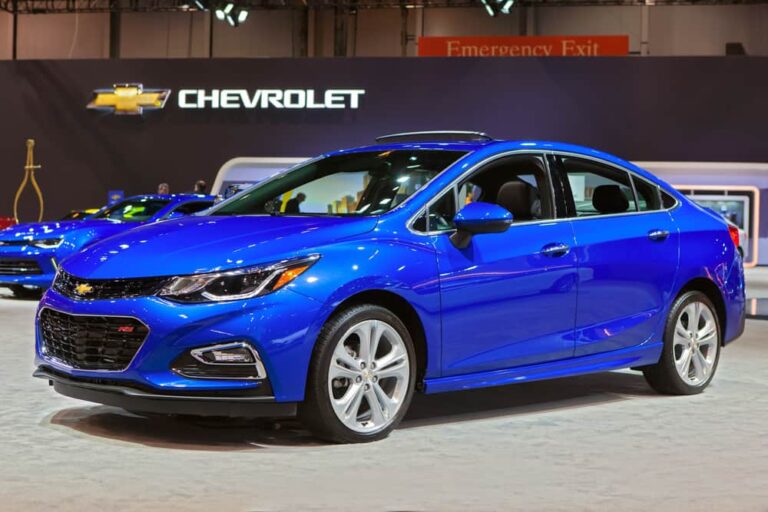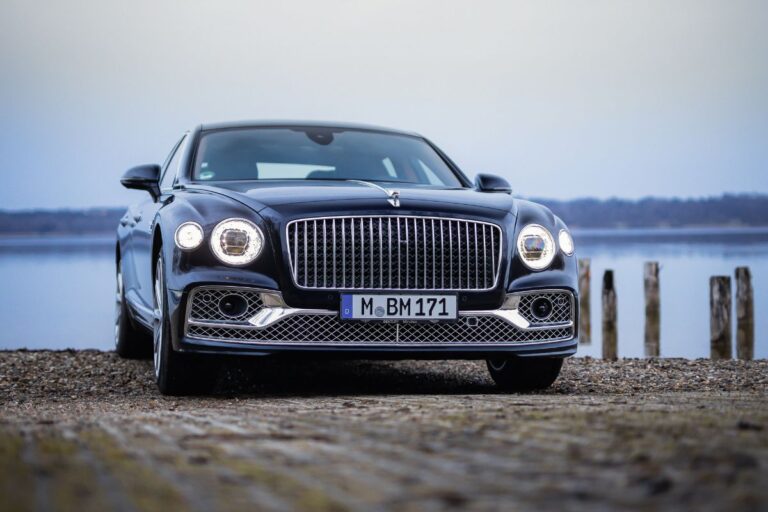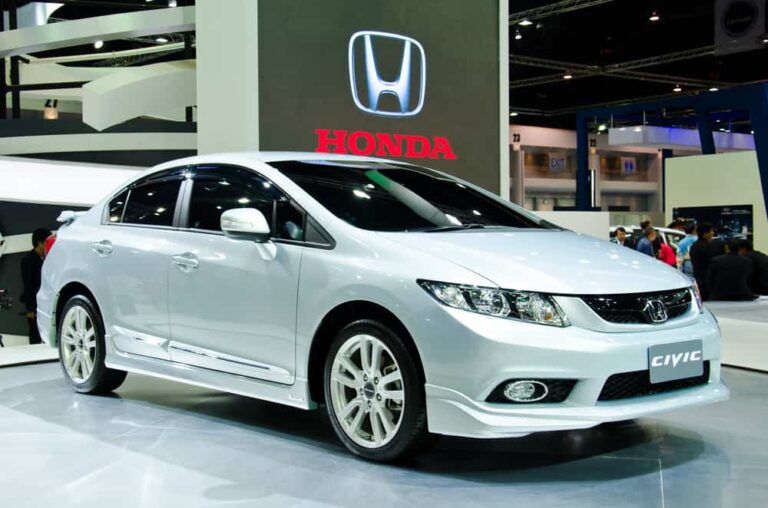
The all-new, all-electric Hyundai IONIQ 5 will be released in the United States very shortly, in just a few months, and I have reason to believe that it is a strong competitor for the Tesla Model 3, and the Tesla brand as a whole.
Are you intrigued yet? Read on to learn all about this hot new EV, and why it’s such a strong competitor.
What is the Tesla Model 3?
The all-electric Model 3, released in 2017, is the fourth car produced by Tesla, following after the 2009 Roadster, the Model S in 2012, and the 2015 Model X SUV.
Over 501,000 units of the Tesla Model 3 sold in 2021 alone, and has sold over a million units since 2017.
The Tesla Model 3 is a compact sedan that is intended to be cost-effective and more widely available to the public. This car offers a thoughtful design, inside and out, and has many unique features to attract drivers.
Model 3 seats five people, is available in rear-wheel-drive or all-wheel-drive and can be a single or dual motor. Model 3 is also self-driving, to a limited extent. In the future, they will become 100% autonomous, but that over-the-air software update hasn’t been rolled out just yet.
This car is available in three models; the Model 3 (base model), Model 3 Long Range, and Model 3 Performance.
Simply put, the Model 3 is the most basic, affordable version. The Model 3 Long Range offers the longest driving range per battery charge. Finally, the Model 3 Performance is the fastest option, with a 3.1 second 0 to 60 mph.
Related to: Tesla Model 3 vs Model S │15 Cars similar to the Tesla Model 3
What is the Hyundai IONIQ 5?

The Hyundai IONIQ 5 is an all-electric SUV, and the very first electric SUV to be rolled out by Hyundai. This car won’t go on the market until at least the Spring of 2022.
This car has many smart features, including drive assist for the highway, blind spot collision avoidance, lane-keeping, and lane following assist, rearview monitor with parking guidance, rear-cross traffic collision avoidance assist, parking guidance, and car, pedestrian, and cyclist detection.
The Hyundai IONIQ 5 will seat five people, and comes in 3 trims (SE, SEL, and Limited) and options for each trim. For now, it looks as though these are the combinations available to choose from:
– Hyundai IONIQ 5 SE Standard Range RWD
– Hyundai IONIQ 5 SE RWD
– Hyundai IONIQ 5 SE AWD
– Hyundai IONIQ 5 SEL RWD
– Hyundai IONIQ 5 SEL AWD
– Hyundai IONIQ 5 Limited RWD
– Hyundai IONIQ 5 Limited AWD
Related to: 13 Cars Similar to Hyundai Ioniq 5 │12 Cars Like the Polestar 2
How are they different?
While the Hyundai IONIQ 5 is a cross-over SUV, like the Tesla Model Y, it is better to compare the Hyundai IONIQ 5 to the Model 3 due to pricing similarities. We’ll explore and expand into further details below.
Features

The Hyundai IONIQ 5 has a range of 303 miles per charge, across all trims and models.
The Tesla Model 3 can drive for 267 to 334 miles per charge.
It takes a Model 3 about 4 hours with an 11-22 kW charging station, or less than 30 minutes at a Tesla Fast Charging Public Station. Most Model 3s can recharge up to 200 miles in less than fifteen minutes at Public Tesla Superchargers.
For the Hyundai IONIQ 5, it takes 6-9 hours to go from 20% to 80% if the car is plugged into a 7-22kW charger. At public charge stations, it only takes 20-50 minutes to go from empty to full charge. This is a range of 92 to 275-miles per every 30-minutes of charge time.
The Hyundai IONIQ 5 has been known to charge from 10% to 80% in 18 minutes on a public fast charger.
On similar chargers, the Tesla Model 3 goes from 10% to 80% in 28 minutes.
Something unique about the Hyundai IONIQ 5 is that it can receive power from, or give power to your home. Many car campers will adore this feature because it will allow them to bring power to their campsites in the great outdoors.
You can even charge other electric vehicles with your Hyundai IONIQ 5. Don’t worry though, you can set a minimum shut off point to prevent the complete drainage of your car’s battery.
Both the Hyundai IONIQ 5 and Tesla Model 3 offer one-pedal driving, but do have an emergency brake pedal in case of an emergency.
Design Elements

The Tesla Model 3 has a 15 inch display; Hyundai IONIQ 5 has a 12.3 inch display in the center of the vehicle, as well as another 12.3 inch display located right above the steering wheel in the dashboard.
Some physical buttons remain on the Hyundai IONIQ 5, though not many. The Tesla Model 3 is completely button-free.
Durability
It is too soon to tell how well the Hyundai IONIQ 5 will hold up and how much it will cost to maintain and repair these vehicles. To ease your worries, Hyundai guarantees that the high-capacity lithium ion battery system will last for 10 years or 100,000 miles.
Cost Differences
The price difference between the Model 3 and IONIQ 5 makes the Hyundai IONIQ 5 really stand out as a solid option.
The Model 3 ranges from $44,990 to $58,990 (for base trim prices). Meanwhile, the IONIQ 5 starts at $43,650 and goes to $50,600 (again, for starting base trim prices).
Tesla Model 3 has a range of 267 miles, a top speed of 140 mph, and a 5.8 second 0 to 60 mph. It is single motor and rear-wheel-drive. It begins at $44,990.
Tesla Model 3 Long Range has a range of 334 miles, a top speed of 145 mph, and a 4.2 second 0 to 60 mph. Unlike the Tesla Model 3 base trim, it is dual-motor and all-wheel drive. This trim begins at $51,990.
Tesla Model 3 Performance has a range of 315 miles, a top speed of 152 mph, and a 3.1 second 0 to 60 mph. This trim also has all-wheel-drive and is dual-motor. It starts at $58,990.
Hyundai IONIQ 5 SE Standard Range RWD has a 220-mile range with an 8.2 second 0 to 60 mph. It starts at $39,700.
Hyundai IONIQ 5 SE RWD has a range of 303 miles with 225 horsepower. It begins at $43,650.
Hyundai IONIQ 5 SE AWD has a charging range of 256 miles and an impressive 320 horsepower. It begins at $47,150.
Hyundai IONIQ 5 SEL RWD is a 225 horsepower, 303-mile range car that begins at $45,900.
Hyundai IONIQ 5 SEL AWD also has a range of 256 miles. It has 320 horsepower and starts at $49,400.
Hyundai IONIQ 5 Limited RWD begins at $50,600 and offers 225 horsepower and a 303-mile charging range.
Hyundai IONIQ 5 Limited AWD is 320 horsepower, with a 256-mile range, and starts at $54,500.
Both Tesla and Hyundai offer free public charging stations, at least for the first two years of ownership of the vehicles. Tesla Superchargers are $0.13 to $0.26 per minute to charge, while most Hyundai charging stations cost $1.50 per hour.
Benefits

Both the Hyundai IONIQ 5 and Tesla Model 3 offer one-pedal driving, but do have an emergency brake pedal in case of an emergency.
The Hyundai IONIQ 5 offers 106.5 cubic feet for passengers, 27 cubic feet of cargo space behind the second row, and 59 cubic feet behind the front row.
In the Tesla Model 3, is has 97 cubic feet for passengers, and 19.8 cubic feet in the trunk.
Conclusion
The Hyundai IONIQ 5 doesn’t have the range or speed of a Tesla Model 3, but the price point, power, warranty, speedier charge, large cargo space, and roomy passenger space make up for the difference.
I believe the Tesla Model 3 has a more aesthetically pleasing appearance, inside and out, but that is a minor consideration.
What are your thoughts? If you had to choose between a Hyundai IONIQ 5 and a Tesla Model 3, which would you decide on, and why?






